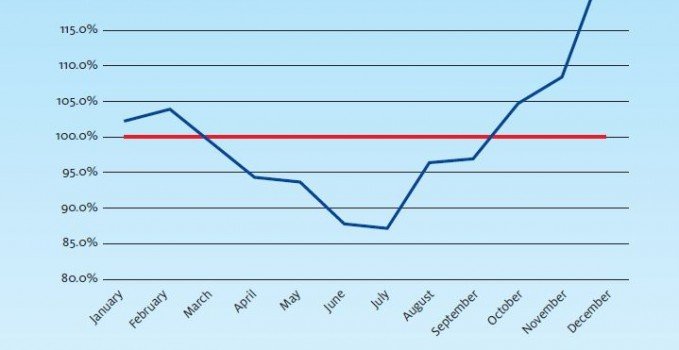Published on
The following chart, based data from a Practice Velocity study of more than 20,000,000 patient visits over a 5-year period, shows that urgent care exhibits a strong pattern of seasonality. The average daily visits in each month vary from average daily visits over the course of a year. For example, on an average day in July, there are 14% fewer patients than the baseline number, whereas in an average day in December, there are 25% more visits. Although between 2010 and 2015 there were a number of strong influenza outbreaks in December and January, it is clear that November through March is respiratory season, driving the bulk of urgent care visits. Seasonality often differs by region, with Sunbelt winter vacation or retirement communities (i.e., those in Florida and Arizona) seeing more exaggerated variances than regions without seasonal population migration. Understanding the seasonality curve is important in determining when to open a new urgent care center, when developing marketing campaigns, and when hiring and scheduling health-care providers and staff. For example, a center that maintains level staffing throughout the year may experience long wait times in December and low provider efficiencies in July. Centers thus provide contraseasonal ancillary services, such as occupational medicine, to flatten demand over the course of the year.

